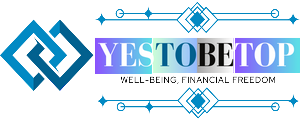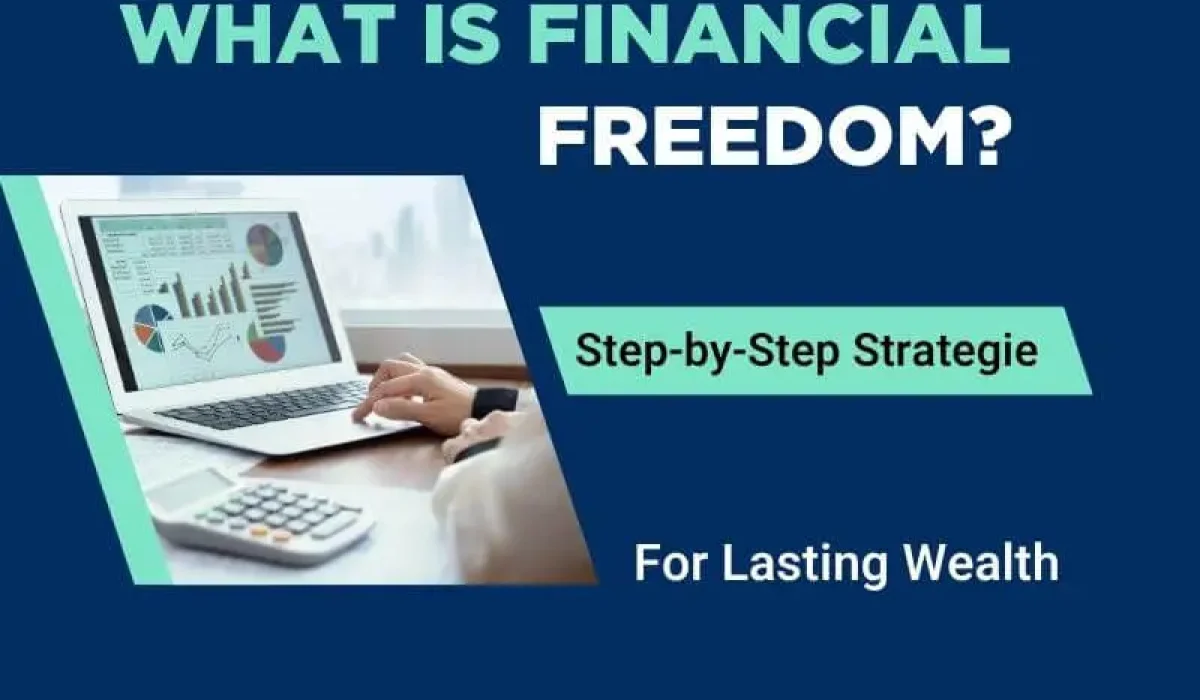Financial freedom represents one of the most sought-after goals in personal finance, yet many people struggle to define what it means or how to achieve it. At its core, financial freedom enables individuals to make life decisions without being overly constrained by financial limitations. It is about having adequate savings, investments, and passive income to support the desired lifestyle without relying on a traditional salary.
Understanding and chasing financial freedom is not just about accumulating money – it is about making options, reducing stress, and gaining control over your time and options. Whether you are starting your financial journey or looking to accelerate your progress, this broad guide will provide you with the knowledge and strategies required to create permanent financial security.
Table of Contents
Understanding Financial Freedom: More Than Just Money
What Does Financial Freedom Mean?
Financial freedom occurs when you have sufficient financial resources to live comfortably without depending on employment income. This doesn’t necessarily mean being wealthy enough to buy anything you want, but rather having enough passive income and savings to cover your living expenses and pursue your goals without financial anxiety.
The concept contains many major elements:
Income security: Many income sections that do not depend on your time or active work
Debt Freedom: To be free from high-interest debt that drains your monthly income
• Emergency preparations: maintaining adequate savings to handle unexpected expenses
• Investment growth: Construction property that appreciates over time and generates passive income
• Lifestyle choice: Decision-making capacity based on preference instead of financial requirement.
Financial Freedom vs. Financial Independence: Key Differences
While often used, financial freedom and financial independence have different meanings that are important to understand when planning your financial strategy.
Financial independence generally refers to having sufficient assets and passive income to cover all your basic living expenses without the need to work. It is often calculated using the “4% rule”, which suggests that you should 25 times your annual expenses to safely withdraw 4% annually without reducing your principal. On the other hand, financial freedom is beyond the basic needs. This includes adequate resources to carry on your passion forward, take risks, help others, and live life on your terms without limiting financial obstacles. Understand financial independence as the foundation and financial freedom as the fully created structure on it.
The Personal Nature of Financial Freedom
Different Definitions for Different People
Financial freedom means different things to different individuals, and your definition will shape your strategy for achieving it. Understanding your vision is crucial for creating an effective plan.
For some, financial freedom may mean:
- Minimum approach: being enough to cover basic needs while bus and debt-free
- Entrepreneur’s dream: Business property construction, which generates passive income when providing flexibility
- Family Providers: Family Safety, Education Financing, and Ensuring Ability to be present for important moments
- Adventurer’s goal: Resources to travel, explore, and experience life without a shortage of time
- Philanthropist’s vision: deposit money to create a meaningful effect through charity.
Assessing Your Financial Freedom Goals
Before developing your strategy, take time out to clearly define what financial freedom means for you. Consider these questions:
- What will you do with your time if money is not a hindrance?
- What monthly income will you need to feel completely safe?
- Will there be a change in lifestyle with financial freedom?
- How important is the Heritage vs. Heritage to enjoy your money?
- What level of risk are you comfortable with advancing these goals?
Your answers will guide every financial decision made by you and help you to be inspired during challenging times.
Essential Strategies to Achieve Financial Freedom
Setting Clear and Measurable Financial Goals
The path to financial freedom begins with establishing specific, measurable, achievable, relevant, and time-bound (SMART) financial goals. Vague aspirations like “I want to be rich” won’t provide the direction needed for success.
Can join short-term goals (1-2 years):
- Construction of emergency fund for 3-6 months’ expenses
- Paying a high-interest credit card loan
- Increasing your income by 20% through skill development or a side hustle
- Maximum employer 401 (K) matching contribution
Medium-term targets (3–10 years) may include:
- Savings to pay a house down
- Construction of investment accounts 2-5 times higher value of your annual income
- Developing many income sources
- Getting specific net worth milestones.
Long-term goals (10+ years) typically focus on:
- Accumulating 25 times your annual expenses for financial independence
- Building a diversified investment portfolio
- Creating passive income streams that exceed your living expenses
- Planning for retirement and legacy wealth transfer
Mastering the Art of Budgeting and Expense Management
Effective budgeting forms the foundation of any successful journey to financial freedom. Without knowing where your money goes, you can’t optimize how it’s used to build wealth.
The 50/30/20 rule provides a simple initial structure:
- 50% for needs (housing, utilities, groceries, minimum loan payment)
- 30% want (entertainment, food, hobby)
- 20% for savings and loan repayment above the minimum
However, serious people often flip this script about obtaining financial freedom, which remains at 50–60% of their income by saving and investing 40–50%. This aggressive approach, which is sometimes called “lean fire”, increases the timeline significantly.
Practical budgeting strategies include:
Zero-based budget: Give every dollar an objective before the month starts, making sure that there is no money.
Envelope method: Use cash or separate accounts for different expense categories to prevent overspending.
Automatic Savings: Install automatic transfer for savings and investment accounts immediately after Payday, treating savings like a non-parasitic bill.
Regular reviews: Conduct the monthly budget review to identify overspending areas and customization opportunities.
Eliminating Debt: Your Path to Financial Freedom
High-interest debt acts as a significant barrier to financial freedom, creating monthly obligations that prevent money from being directed toward wealth-building activities. Developing a strategic debt elimination plan is crucial for anyone serious about achieving financial independence.
The loan avalanche method focuses on paying loans with the highest interest rates when making minimal payments on others. This approach reduces the total interest paid over time and is mathematically optimal.
The loan snowball method prefers to pay the smallest loans first, regardless of the interest rate. Although this approach can incur more interest, it provides a psychological victory that can help maintain inspiration.
Debt consolidation options can simplify payment and potentially reduce interest rates:
- Balance transfer credit card with 0% introductory rates
- ersonal loan with low interest rates compared to credit cards
- Home equity loan or credit lines (use carefully)
Strategies for Accelerating Debt Payoff:
- Apply windfalls (tax refunds, bonuses, gifts) directly to debt
- Sell unused items and put proceeds toward debt reduction
- Take on temporary side work specifically for debt elimination
- Negotiate with creditors for lower interest rates or settlement options
Building Your Emergency Fund: Creating Financial Security
An emergency fund serves as your financial safety net, preventing unexpected expenses from derailing your progress toward financial freedom. This fund should be easily accessible and separate from your investment accounts.
Emergency Fund Targets:
- Starter Emergency Fund: $ 1,000- $ 2,500 that actively pays loans
- Full Emergency Fund: 3-6 months’ stay for most people
- Extended Emergency Fund: 9-12 months spent for people with convertible income or job insecurity.
Where to Keep Your Emergency Fund:
- High-yield savings accounts offering competitive interest rates
- Money market accounts with check-writing privileges
- Short-term certificates of deposit (CDs) laddered for accessibility
- Conservative, liquid investment accounts (for larger emergency funds)
Building an emergency fund requires discipline, but it provides invaluable peace of mind and prevents the need to go into debt when life’s inevitable surprises occur.
Investing Wisely: Growing Your Wealth Over Time
Investing transforms your money from a tool for spending into a wealth-building machine. The power of compound interest means that starting early and staying consistent can have profound impacts on your financial future.
Investment Fundamentals for Financial Freedom:
Diversification spreads risk to various asset classes, reducing the impact of poor performance of any single investment. A well-diversified portfolio usually involves:
- Domestic stock (large-cap, mid-cap, small-cap)
- International stock (developed and emerging markets)
- Bond (Government, Corporate, Municipality)
- Real Estate Investment Trust (REIT)
- Alternative investment (goods, precious metals)
The average of the dollar-weighted involves investing a certain amount regularly, regardless of market conditions. This strategy reduces the impact of market volatility and removes emotional elements from the decisions of investment time.
Low-cost index funds offer extensive market risk with minimal fees, making them ideal for long-term money management. Many financial experts recommend index funds as a core holding for most investors.
Taxed accounts reduce the burden and accelerate money manufacturing:
- 401 (K) Plans: Employer-Protected Retirement Accounts often with matching contribution
- individual Retirement Accounts (IRAS): Traditional IRAs now offer tax deduction, while Roth IRAS provide tax-free growth
- Health Savings Accounts (HSAS): Triple Tax Benefits for people with high-deductible health schemes
- 529 Plans: Tax-advantaged education savings accounts.
Creating Multiple Income Streams
Relying on a single income source creates vulnerability and limits your wealth-building potential. Developing multiple income streams provides security and accelerates your journey to financial freedom.
Types of Income Streams:
Active Income requires your time and effort:
- Primary employment salary or wages
- Freelancing or consulting work
- Side businesses requiring active management
- Part-time employment or gig work
Passive Income generates money with minimal ongoing effort:
- Dividend-paying stocks and index funds
- Real estate rental income
- Peer-to-peer lending returns
- Royalties from intellectual property
- Business ownership with passive management
Portfolio Income comes from investments:
- Capital gains from stock appreciation
- Interest from bonds and savings accounts
- Mutual fund and ETF distributions
- Real estate appreciation
Building Income Streams Strategically: Start by maximizing your primary income through skill development, education, and career advancement. Then, gradually add passive income sources that align with your risk tolerance and time availability. The goal is to eventually have passive income that exceeds your living expenses.
Advanced Strategies for Accelerating Financial Freedom
The Power of Geographic Arbitrage
Geographic arbitrage involves earning income in a higher-cost area while living in a lower-cost location, dramatically increasing your savings rate. This strategy has become increasingly viable with remote work opportunities.
Options include:
- Working remotely for a company in an expensive city while living in a low-cost area
- Moving to a country with favorable exchange rates while maintaining US income
- Relocating within the US from high-cost to low-cost cities
- House sitting or caretaking arrangements that eliminate housing costs
Tax Optimization Strategies
Minimizing taxes legally and ethically keeps more money working toward your financial freedom goals. Key strategies include:
- Maximizing contributions to tax-advantaged retirement accounts
- Utilizing tax-loss harvesting in investment accounts
- Strategic timing of capital gains and losses
- Taking advantage of tax credits and deductions
- Considering municipal bonds for high earners
- Implementing charitable giving strategies
Real Estate Investment for Passive Income
Real estate can provide both appreciation and cash flow, making it a powerful tool for building wealth. Options range from direct property ownership to real estate investment trusts (REITs).
Direct Real Estate Investment:
- Rental properties providing monthly cash flow
- House hacking (living in one unit of a multi-unit property)
- Real estate wholesaling and flipping
- Commercial real estate partnerships
Indirect Real Estate Investment:
- REITs offering diversified real estate exposure
- Real estate crowdfunding platforms
- Real estate mutual funds and ETFs
Maintaining Your Progress and Staying Motivated
Regular Financial Check-ups and Adjustments
Achieving financial freedom is not a “set it and forget it” process. Regular review and adjustment ensure you stay on track and adapt to changing circumstances.
Monthly Reviews should cover:
- Budget performance and spending analysis
- Investment account performance
- Progress toward short-term goals
- Cash flow optimization opportunities
Quarterly Reviews include:
- Investment portfolio rebalancing
- Tax planning considerations
- Insurance coverage adequacy
- Emergency fund sufficiency
Annual Reviews encompass:
- Goal setting for the upcoming year
- Investment strategy assessment
- Estate planning updates
- Tax return analysis and planning
Overcoming Common Obstacles
The journey to financial freedom includes challenges that can derail progress if not properly addressed.
Lifestyle inflation occurs when spending with income increases, preventing wealth accumulation. When income increases, and to maintain awareness to creep, fight the savings rates automatically.
Market instability may trigger emotional investment decisions. Develop a long-term perspective, maintain diversification, and avoid selling nervousness during market recession.
Lack of Patience leads to abandoning strategies before they have time to work. Remember that building wealth is a marathon, not a sprint, and compound interest needs time to work its magic.
Social Pressure to spend money on appearances can undermine financial goals. Surround yourself with like-minded individuals who support your financial objectives.
Building Financial Discipline and Habits
Success in achieving financial freedom depends more on consistent habits than on perfect timing or exceptional returns.
Automate Your Success:
- Set up automatic transfers to savings and investment accounts
- Use automatic bill pay to avoid late fees
- Automate debt payments to stay on schedule
- Schedule regular financial reviews as non-negotiable appointments
Develop a Money Mindset:
- View expenses as investments in your future self
- Celebrate financial milestones to maintain motivation
- Learn from financial mistakes rather than dwelling on them
- Stay educated about personal finance through books, podcasts, and courses
Taking Action: Your Next Steps Toward Financial Freedom
La liberté financière est un cheminement qui exige engagement, patience et action. Les stratégies présentées dans cet article vous guident, mais la réussite repose sur votre volonté de les appliquer régulièrement. Commencez par définir ce que signifie la liberté financière pour vous. Fixez-vous un objectif précis avec une échéance raisonnable. Établissez un budget axé sur l’épargne et l’investissement, tout en réduisant les prêts à taux d’intérêt élevés. Constituez un fonds d’urgence pour plus de sécurité. Investissez dans des fonds indiciels à faible coût pour une croissance composée. Atteindre la liberté financière est une question de progrès, pas de perfection. Commencez dès maintenant à façonner l’avenir que vous désirez.




